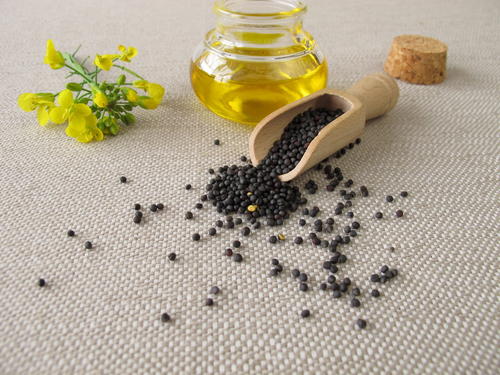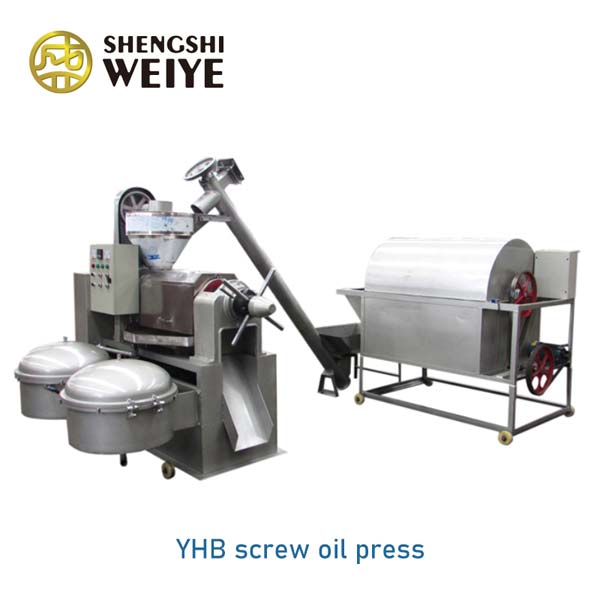About rapeseed oil
Brassica napus subsp. Brassica napus is a bright yellow flowering plant of Brassicaceae (Brassicaceae or Brassicaceae). It is mainly planted because of its oil-rich seeds, which naturally contain a lot of erucic acid. Rape is a kind of rape varieties, its erucic acid content is very low, especially suitable for human and animal consumption. In 2000, rapeseed was the third largest source of vegetable oil in the world after soybean and palm oil. It is the second largest source of protein powder in the world after soybean.
Rapeseed oil is one of the oldest known vegetable oils. However, due to the high content of erucic acid (which is harmful to animal myocardium) and glucosinolates (which makes it lack of nutrition in animal feed), its use in history is limited.
The content of erucic acid in rapeseed oil can reach 54%. Food grade rapeseed oil extracted from rapeseed varieties, also known as rapeseed oil 00 oil, low erucic acid rapeseed oil, Lear oil and rapeseed rapeseed oil equivalent oil, has been generally considered safe by the U.S. Food and drug administration. According to government regulations, the erucic acid content of rapeseed oil in the United States and the European Union is the highest, which is 2% and 2% respectively. There are special regulations for baby food. These low levels of erucic acid are not believed to cause harm to human infants.
Oil extraction process:
1. Hot pressing: Rapeseed cleaning → fried seeds → extrusion → filtration → refined rapeseed oil
2. Cold pressing: Rapeseed → cleaning → pressing → filtering → finished rapeseed oil
The refining process of rapeseed oil is as follows
1 filtration
The crude oil was heated to 30 ~ 32 ℃ and stirred at the speed of 60 R / min to remove the bubbles in the oil. Add 0.1% - 0.2% phosphoric acid (0.5% industrial phosphoric acid) by weight of oil and stir for about 30 min.
2. Neutralization by adding alkali
The mixed liquid of 160 Baume degree, 1.5% oil and 0.5% oil was used for alkali refining. First, the mixture was stirred rapidly (60 R / min) for 10-15 min, then slowly (27 R / min) for 40 min.
3 static sedimentation
After neutralization and slow stirring for 40 min, raise the temperature to 50-52 ℃, continue to stir slowly for about 10 min, stop stirring after oil soap separation, and turn off the indirect steam. After standing for about 6 h, the oil and soap were separated.
4 water washing
The pure oil separated from the soap residue was heated to 85 ℃ under stirring, and then the saline alkali water (containing 0.4% caustic soda and 0.4% industrial salt) with 15% oil mass and 90 ℃ temperature was added. After adding water, stop stirring and let it stand for 30 min to discharge the lower wastewater. After the waste water is discharged, the oil temperature is still controlled at 35 ℃, and then 15% boiling water (clean water) is injected. In the same way, after adding water, stop stirring and let stand for 0.5 h before discharging the lower wastewater. Wash 2 or 3 times in this way.
5 pre decolorization
Start the vacuum pump to suck the purified oil after alkali refining into the pre decolorization pot and raise the temperature to 90 ℃. Dry and dehydrate at 99 kPa vacuum for 30 min. Then absorb a small amount of acid clay and stir for 20 min. After pre decolorization, the oil is cooled to 70 ℃ under vacuum, and then sent to the filter press for filtration by gear pump.
6 decolorization
Absorb the pre decolorized oil into the decolorizing pot, raise the temperature of oil to 90 ℃ under the vacuum of 99 kPa (740 mm Hg), and inhale 100 kg of acid clay and 60 kg of active clay (based on 6 t oil), and continue to stir for 10 min. After decolorization, the oil is cooled to 70 ℃ under vacuum and sent to the filter press for filtration by gear pump.
7 deodorization
Start the vacuum pump to suck the decolorized oil into the deodorizer. When the oil is heated to 90-100 ℃ by indirect steam, direct steam is injected. When the oil temperature rises to 185C, vacuum is pumped by three-stage steam jet pump. The residual pressure is maintained at 400-666 PA, and the oil temperature is still 185 ℃ for deodorization for about 5 h. After deodorization, the oil is cooled to 30 ℃ under vacuum and filtered to obtain refined rapeseed oil.
According to the different requirements of customers, such as crude oil type, daily processing capacity, oil standard and so on, the specifications, number of refining tanks and product price are different.
1-500 T / D soybean, rapeseed, peanut, sunflower and other pressing refining production line
1-500 T / D corn germ, Zanthoxylum, walnut oil, rice bran oil pressing and refining production line
1-500 T / D tea seed, walnut, almond, cottonseed, sesame and other pressing and refining production line





